Constant Power discharge – 18650 Comparison Test
Batteries are devices that store energy and release it back according to our needs.
Every manufacturer aims to build cells with large capacity and enough current to power heavy loads.
In order to check the capacity and power of cells we usually use 3 types of load:
1. Constant Current load (amps)
2. Constant Resistance load (ohm)
3. Constant Power load (watt)
Constant current load
It’s the most popular type of load. We discharge a cell with constant current (amps) and measure the capacity in Ah or mAh. For example, if a cell has a capacity of 3000 mAh it means that it will last 3 hours if discharged with 1A constant current (or 1000 mA). If we increase the load to 2A then time will be reduced to 1.5 hours. It’s very simple.
Our life would also be very simple if every device was using constant current loads but this is not the case.
Typical example of constant current load is a linear voltage regulator. These regulators are not used in electronic cigarettes so I won’t get into details.
One additional issue with mAh measurement is that it ignores cell voltage. Watt-hours is the correct way to measure stored energy in a cell (Wh or mWh). We can convert Ah to Wh with the following equation:
Watt = Volt * Amps so Wh = Volt * Ah
Let’s take for example an alkaline cell AA 2500mAh. It should have the same capacity with a Li-Ion Samsung 25R 2500mAh but of course it doesn’t or else we would use Duracell in our vaping devices because they are smaller and cheaper.
Alkaline cell has 1.2V nominal voltage but li-ion has 3.7V. So, according to the previous equation we have:
Alkaline cell: 1.2V * 2500mAh = 3.000 mWh or 3 Wh.
Li-Ion cell: 3.7V * 2500mAh = 9.250 mWh or 9.25 Wh.
So Li-Ion cell has 3 times more stored energy.
Unfortunately the way to calculate Wh from Ah is approximate and it depends on cell’s nominal voltage. Nominal cell voltage is the mean value between fully charged and fully discharged cell. This nominal voltage drops a lot when we increase current load because the cell’s ESR (Equivalent Series Resistance) increases. Manufacturers give us nominal voltage for very low currents (<= 1A). We should measure nominal voltage for higher currents in order to convert correctly to Wh but again our calculation would be approximate.
Constant resistance load
The most common load in everyday life but unfortunately rare in manufacturers datasheet. I wonder why?
It’s a simple measurement. We connect a constant resistance to the battery and measure the time it will last, a lamp for example.
This type of measurement is ideal for mechanical mods. By pressing the fire button we connect the atomizer resistance directly to the cell.
I promise to make constant resistance measurements in the future.
Constant power load
Typical example for this type o load is a DC-DC converter. The converter draws energy from an input source and converts it into more suitable output energy. For example it can convert a 3V input voltage into 6V output or the opposite. Reminds you of something? Yes, a vaping device.
Electronic mods convert battery voltage to the required voltage to achieve the power we have set.
If, for example, we have a 1Ω resistance in the vaporizer and we set the mod to 25W then it should give us 5V at the output. If the battery has 3.7V then it should raise this voltage to 5V to meet our requirements. There are losses during this conversion. To give 25 watt the mod should pull more watt out of the battery. These losses are characterized by the efficiency of the board.
Let's take for example a Evolv DNA75 plaque. Evolv delivers 86% efficiency. When frozen at 25W means that we pull from the battery 25 / 0.86 = 29W. In order to find how much autonomy the battery will give us, we need to look at the 30W solid state discharge diagrams
Constant power measurements
Enough with theory, it’s time for measurements.
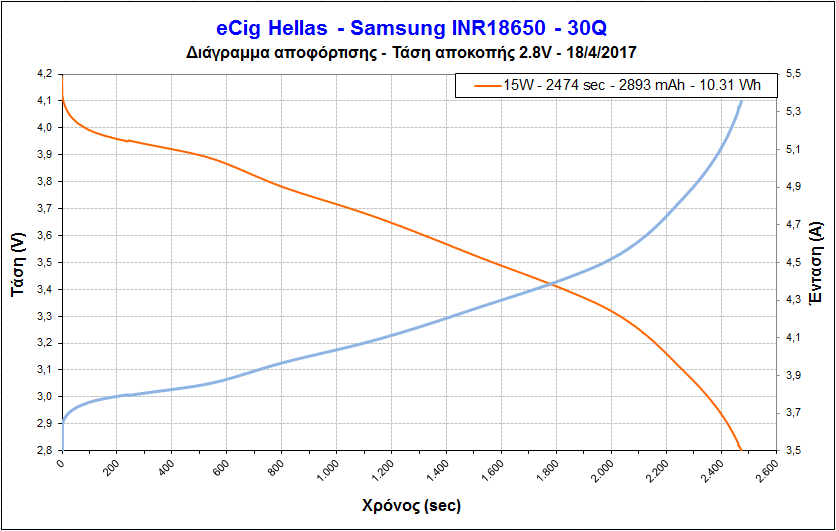
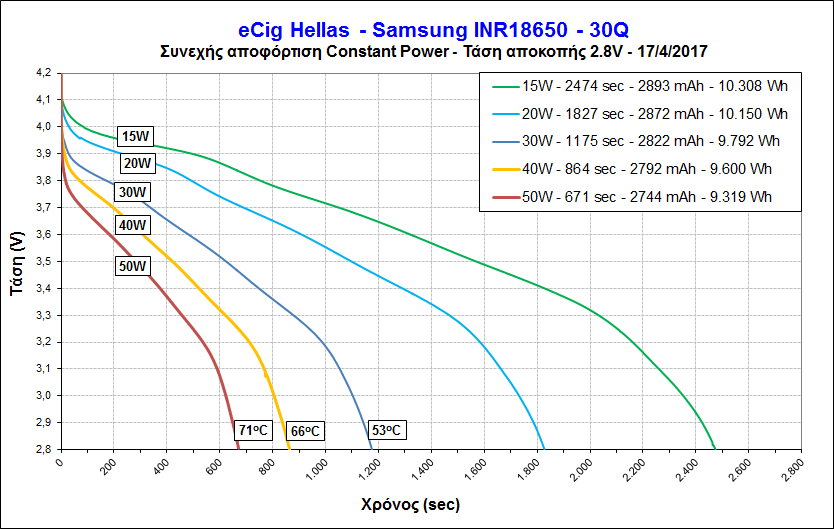
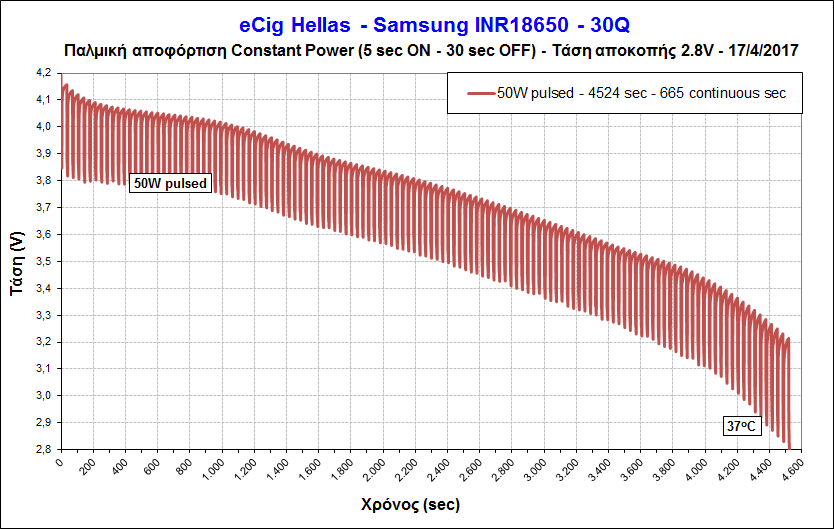
So it does not matter how we will discharge the cell. Total output energy will be the same. But the temperature will be much lower and we can vape at a much higher power without the risk to destroy the battery even though we are beyond the limits of the manufacturer.
To speed up the measurements all cells were discharged with continuous constant power as long as cell temperature did not exceed the max recommended temperature by the manufacturer. After that point cells were discharged with pulses, drawing power for 5 sec and letting the cell rest for 30 sec. This simulates vaping. Cut off voltage was set at 2.8V since this is the lowest limit under load for most modern vaping mods before displaying “battery lock”.
Everything I wrote up until now does not cancel the manufacturer’s data sheet. Samsung 30Q did not suddenly become 30A cell. Samsung’s specifications are still valid. 30Q is a 15A cell but for continuous discharge to 2.5V. That’s what the manufacturer says and is correct. But for the specific pulse constant power discharge that simulates vaping and cut off voltage at 2.8V, cells can easily exceed manufacturer’s specifications and reach 30A.
But take into account that in case of malfunction (e.g. mod auto-fire) we will have serious problems if our mod is set at 50W with a Panasonic 18650B inside. . That’s because cell’s continuousdischarge will exceed 17A while Panasonic can reach only up to 6.5A safely. But in normal vaping conditions cell can be pulse discharged at 17A without problem.
Every cell was discharged 10 times during tests and then measured again with continuous constant power discharge at 15W. The difference with the original discharge at 15W is mentioned as capacity loss for each cell. This capacity loss may mean nothing or mean a lot. Maybe a cell looses initially a big percentage but maintains a steady capacity for many cycles after that. Or maybe capacity loss is proportional, so a loss of 3% means that after 100 cycles the cell will loose 30% of its capacity. I don’t know what the case is but anyway I state capacity loss of each cell.
All measurements were done with the electronic load shown in this video
If you wonder why cells were measured up to 84W is because my electronic load has a limit of 30A. So 2.8V * 30A = 84W.
Below are the world’s first constant power measurements.
LG 18650 HE4

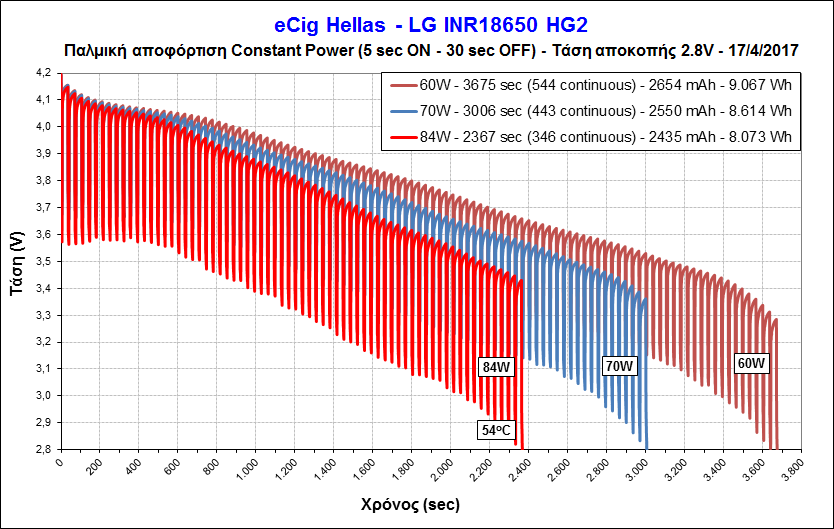
LG INR18650 HG2
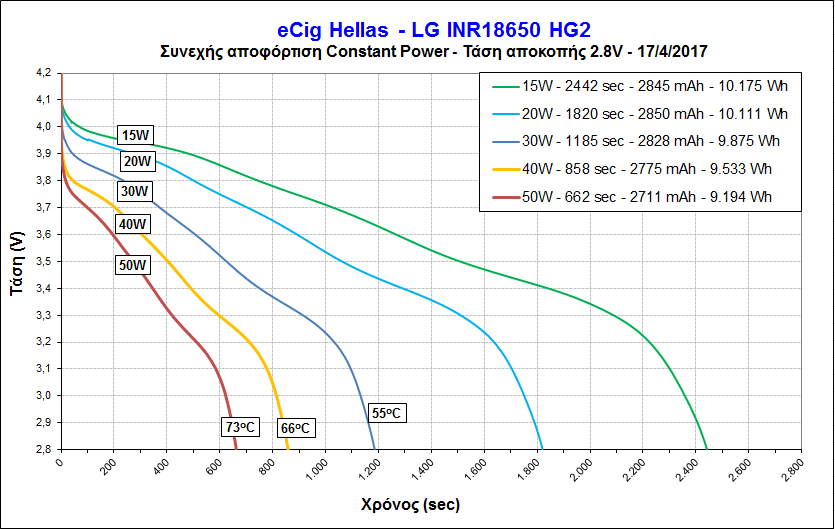
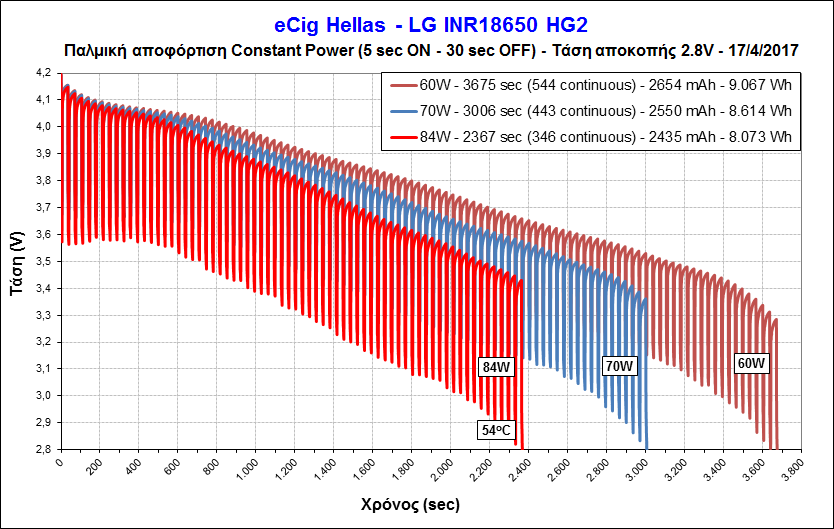
LG INR18650 MJ1
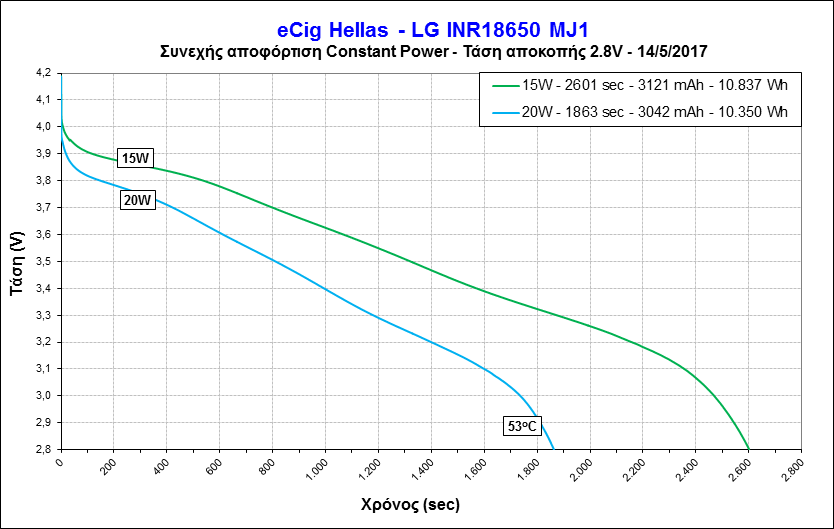
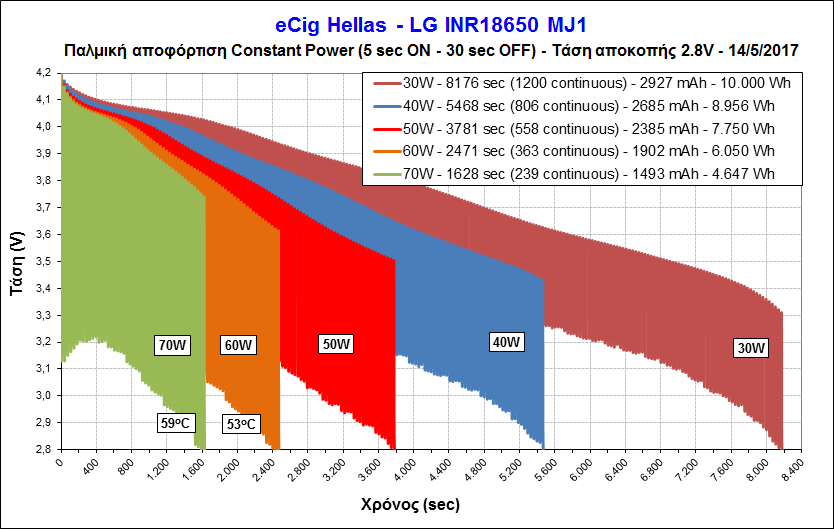
Panasonic NCR 18560B
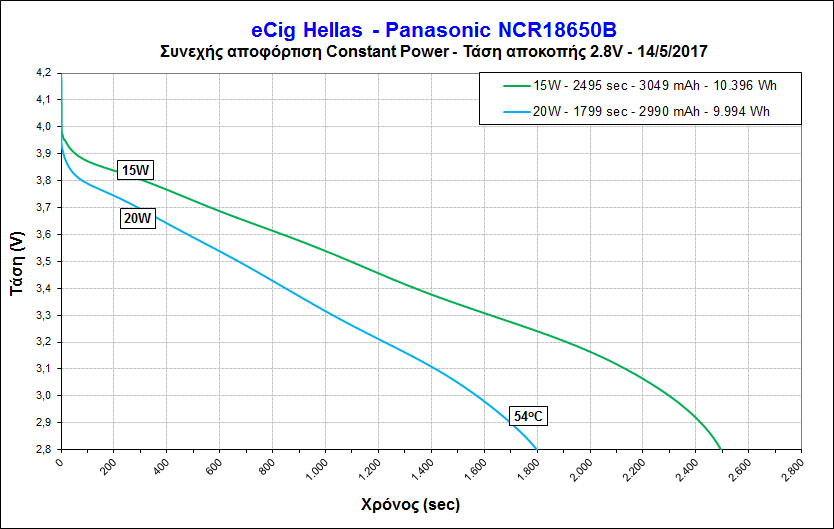

Samsung INR18650-25R
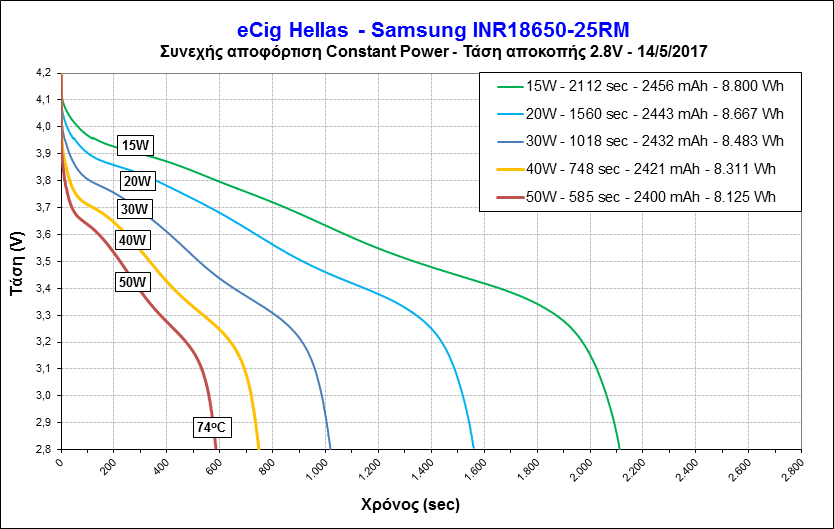
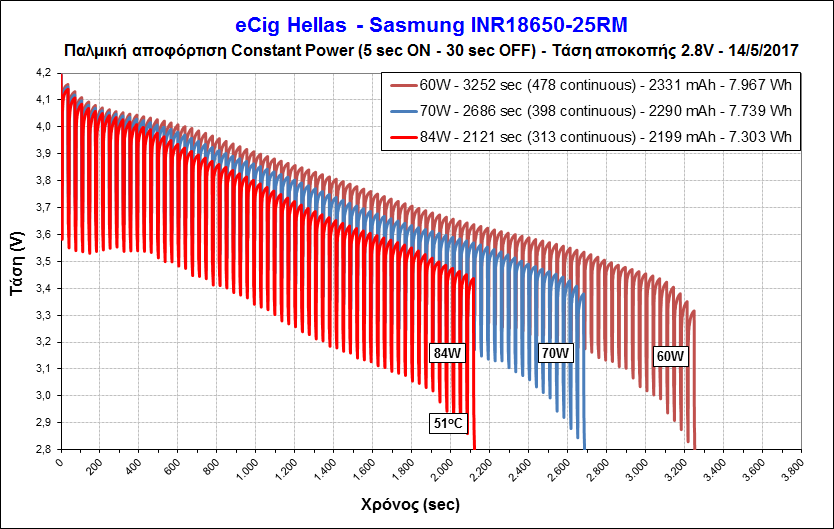
The actual cell being tested was 25RM which is a 25R manufactured at Samsung plant in Malaysia.
Samsung INR18650-30Q
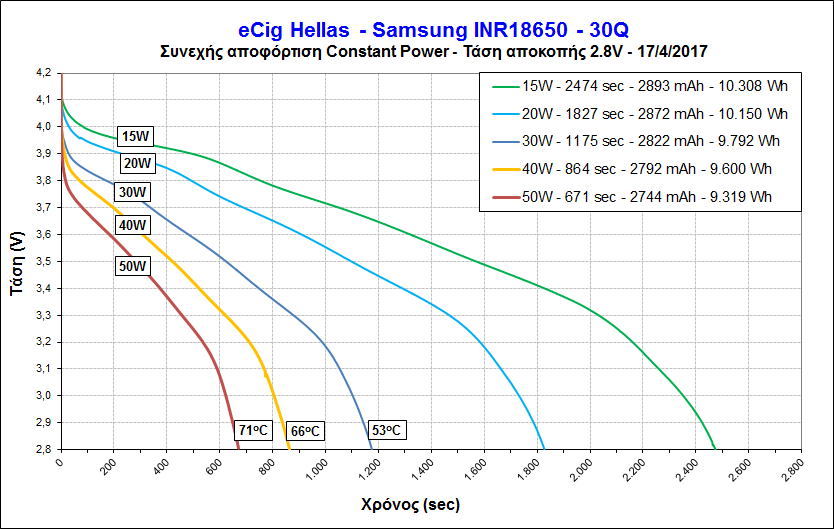
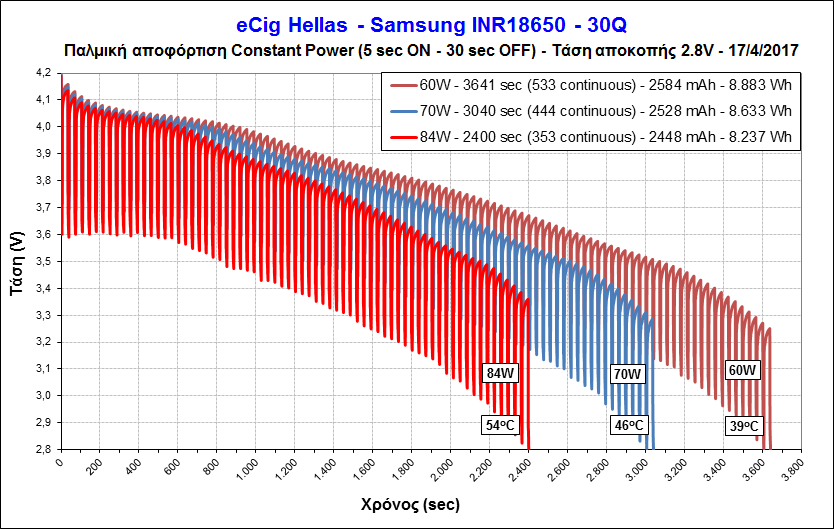
Sony US18650 VTC5
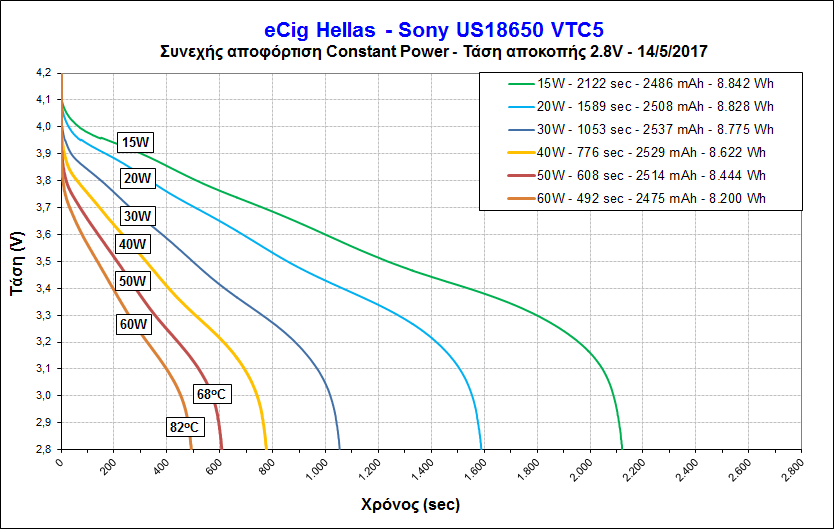
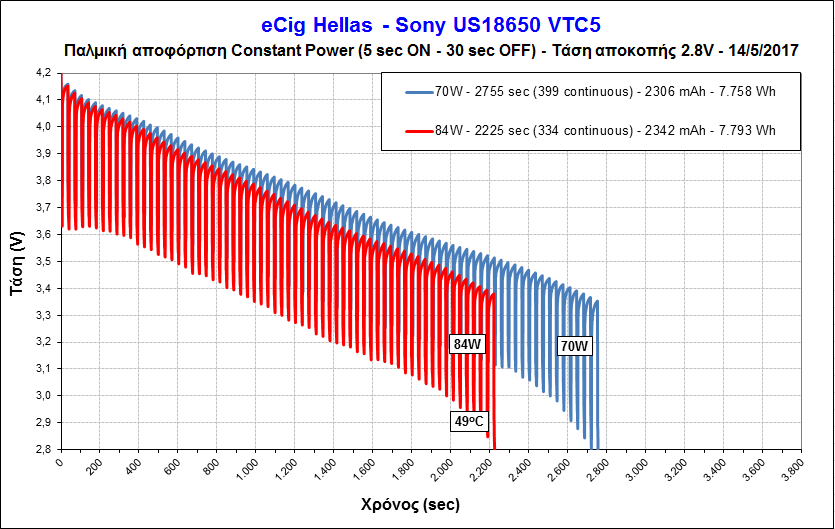
Sony US18650 VTC6
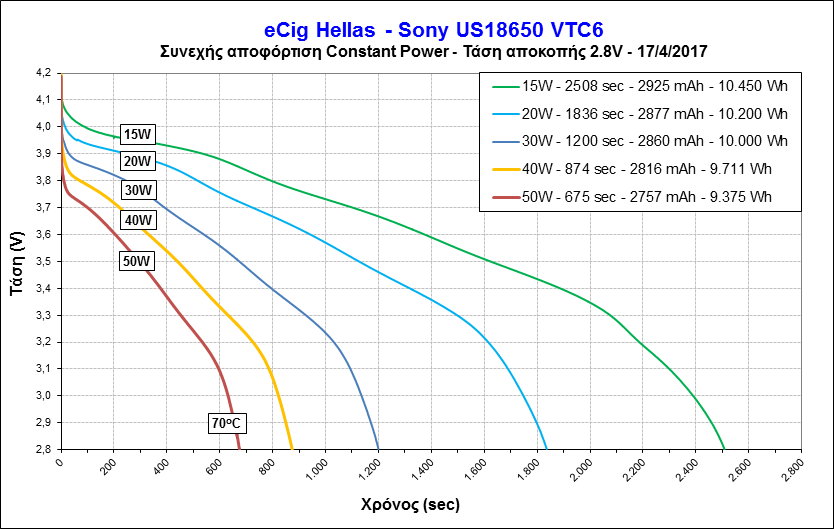
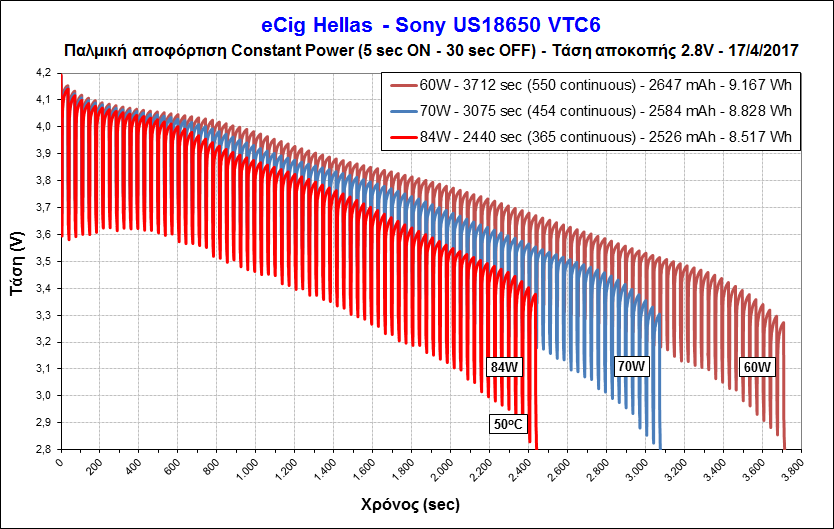
Comparative discharge tables
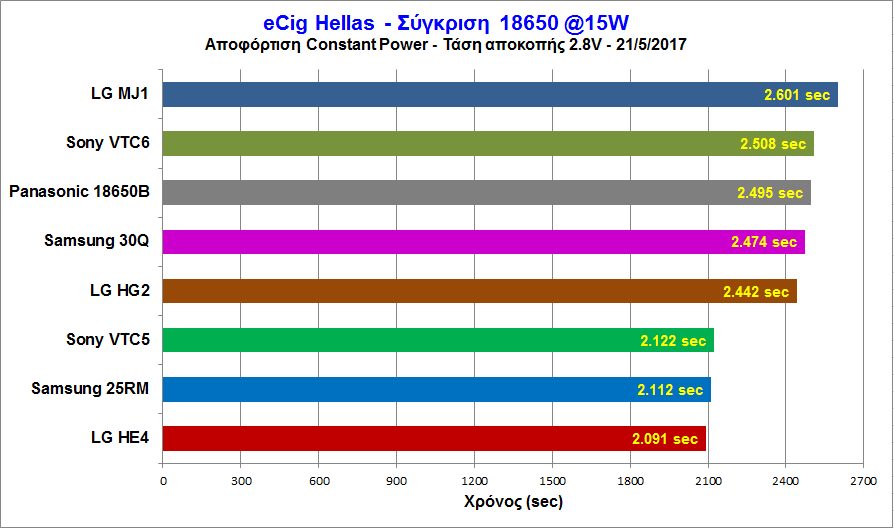
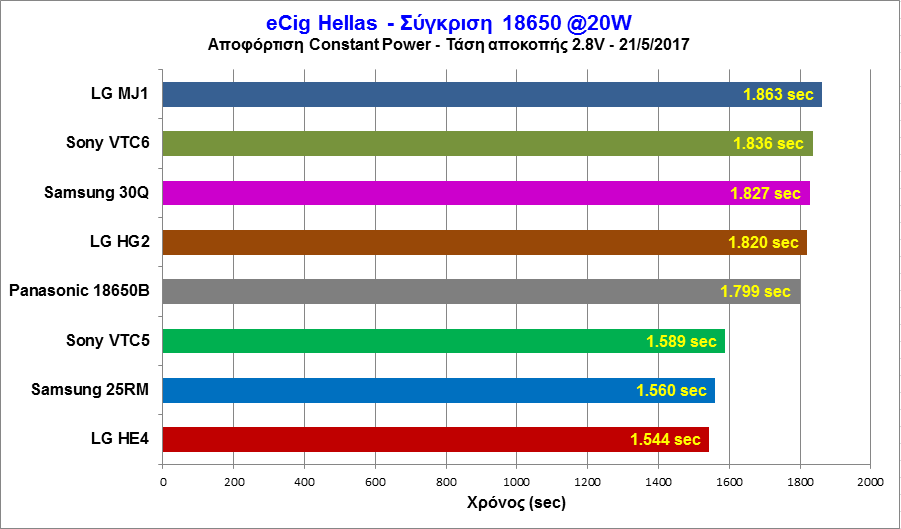

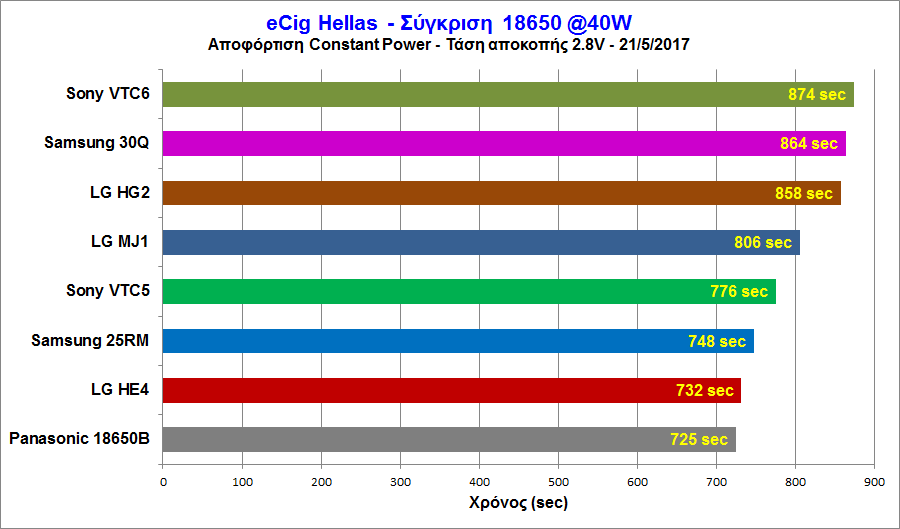
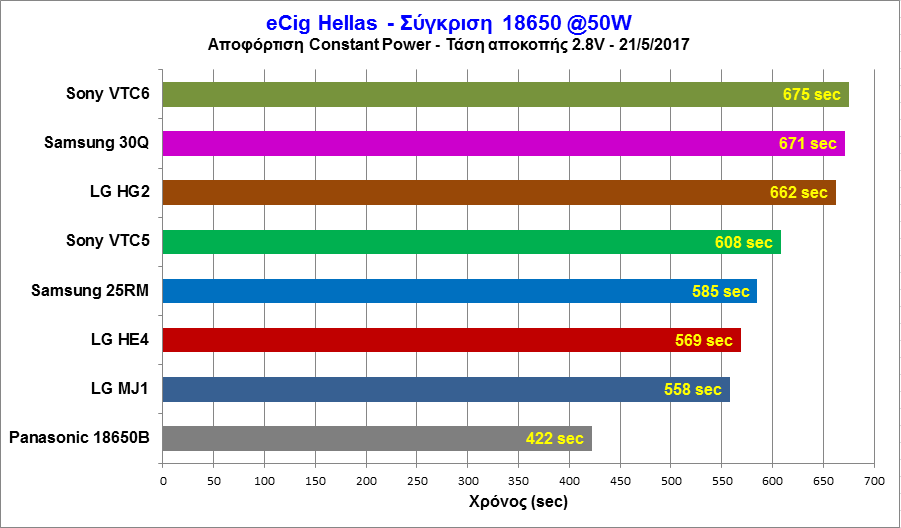

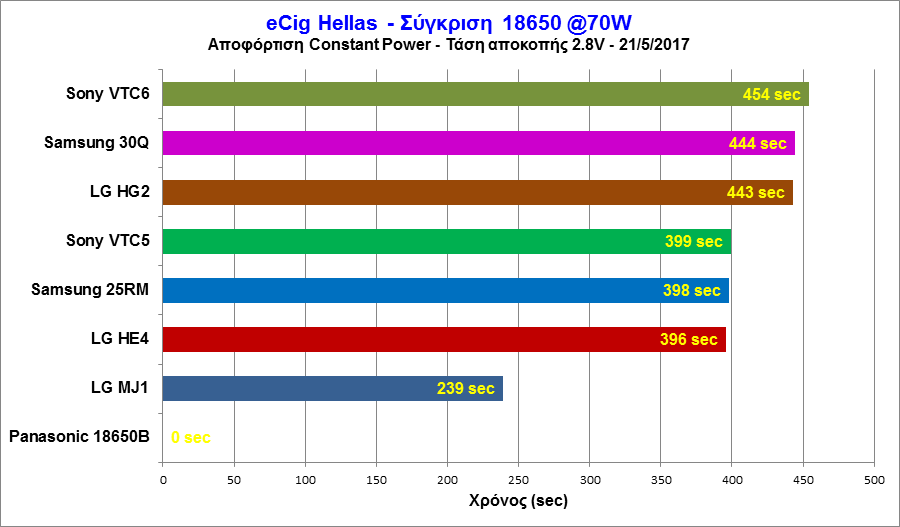
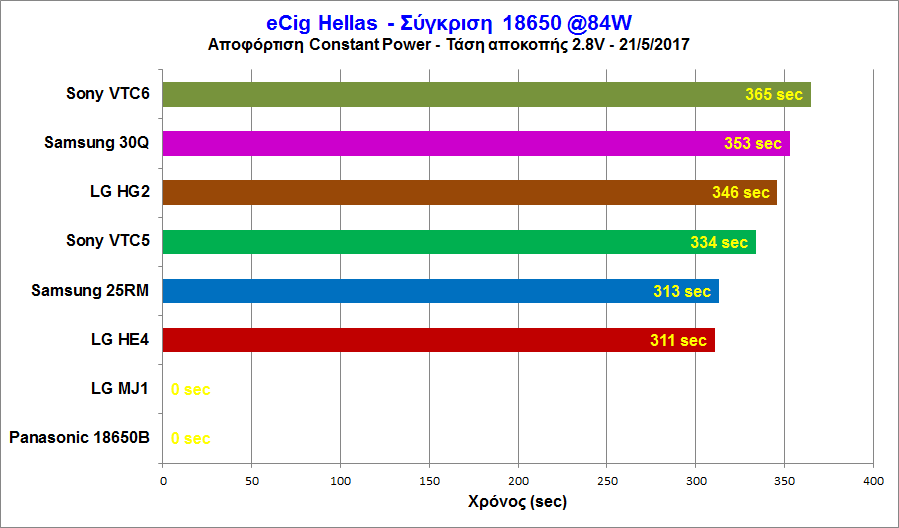
Epilogue

Sony VTC6 clearly excelled in this comparison test. I wouldn’t recommend it though as it’s likely to buy a fake. Sony cells are most popular for imitations since they are more expensive than the others. You may find a Samsung 30Q under the cover of VTC6 or VTC5 under the cover of VTC5A.
You must be careful and buy from a reliable vendor.
This is also true in a smaller extend for LG HG2. The safest choice is Samsung 30Q since I haven’t heard of a fake yet. If you vape at lower watts then LG MJ1 is also a good choice
Finally don’t forget mod efficiency. If your mod has efficiency 80% and you vape at 40W then 40 / 0.80 = 50W. So for 40W you should consult the 50W charts and not 40W.
If your mod is powered by two or more batteries the load is equally balanced between them. If you vape at 60W with a dual cell mod then you should look the 30W chart to find which cell is best for you. In a triple cell mod you should consult the 20W chart and so on.
